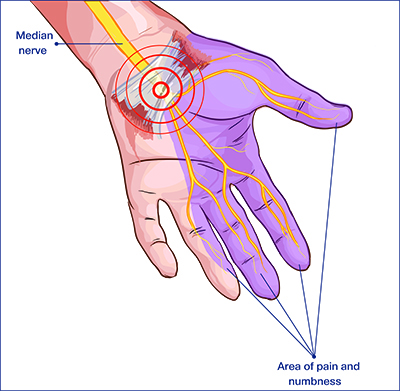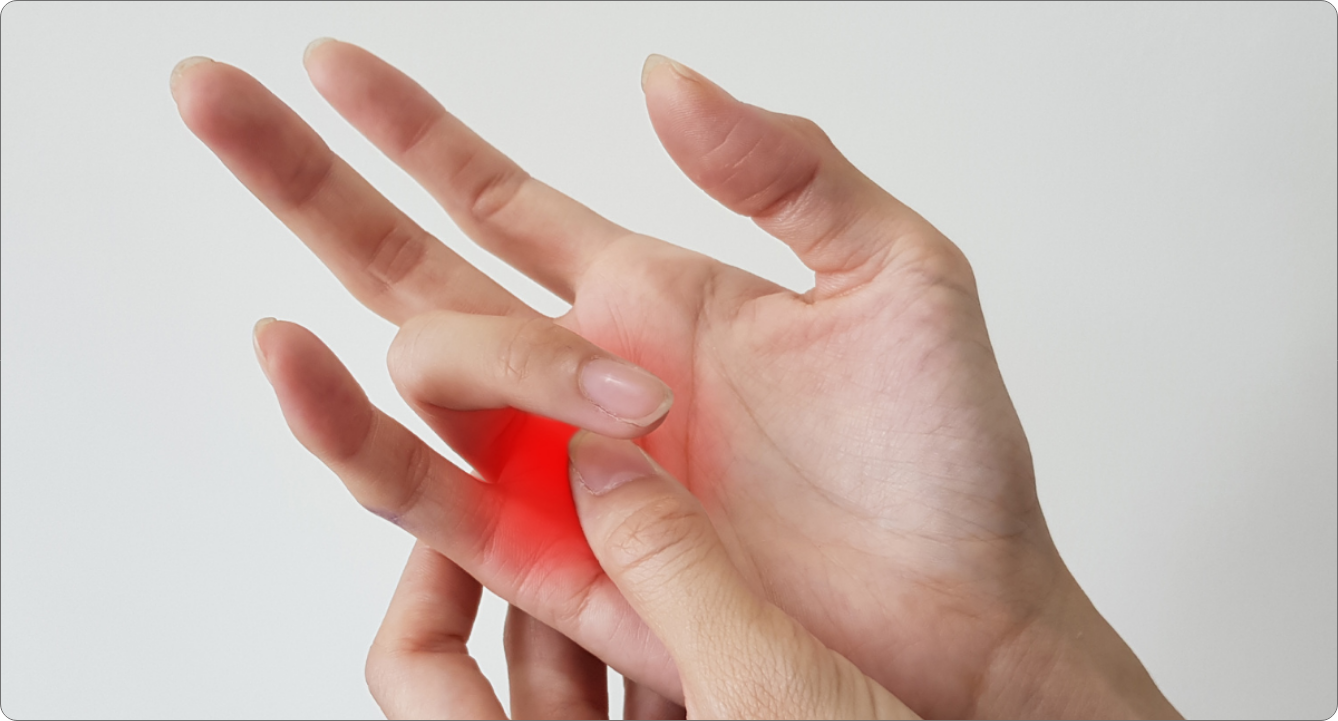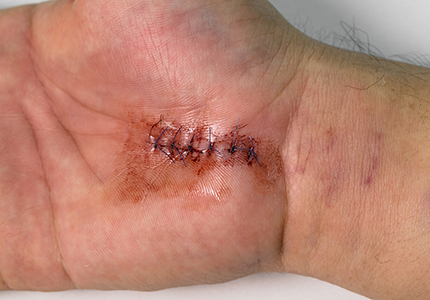What is Carpal Tunnel Syndrome?
Carpal Tunnel Syndrome (CTS) is a common condition that causes pain, numbness, and tingling in the hand and arm. The condition occurs when one of the major nerves in the hand—the median nerve—is compressed as it travels through the wrist. The median nerve controls movement in the thumb and feeling in the thumb and first three fingers. It runs down the arm and forearm, passes through the carpal tunnel at the wrist, and goes into the hand.

What are the symptoms of carpal tunnel syndrome?
- Numbness and Tingling
- Wrist and Hand Pain
- Weakness in the Hand
- Shock-like Sensations
- Decreased Grip Strength
- Loss of Dexterity
- Swelling
Modern Technology’s Role in Transforming Carpal Tunnel Syndrome Treatments
What happens during ultrasound guided minimally invasive carpal tunnel release?
Procedure Overview
After applying a local anesthetic to numb the wrist, a small incision is created to facilitate the use of a microknife device. This tool, guided by real-time ultrasound, safely navigates under the transverse carpal ligament.
Carpal Tunnel Release Effectiveness
The procedure involves using a balloon expansion to separate the median nerve and surrounding vessels, thereby enabling a safe incision of the transverse carpal ligament. This process alleviates nerve pressure, significantly improving symptoms in the wrist and hand, as depicted in the accompanying video demonstration.
Patient Experience with Carpal Tunnel Release Using Ultrasound-Guidance

Brenda Hawkins had carpal tunnel surgery on her left hand ten years ago. So, when her right hand started to go numb during the night, she knew immediately what it was.
“Having experienced carpal tunnel release both ways, I would definitely recommend carpal tunnel release with ultrasound guidance,” says Brenda.
“I just think overall the process is so much simpler.
It’s been great.”
Comparing current treatment options for carpal tunnel release
There are 3 types of carpal tunnel release; open, endoscopic and ultrasound guided minimally invasive. All three have the same goal of releasing the median nerve by cutting the transverse carpal ligament. The following chart compares the three approaches. While the end result is the same, there are procedural and post-procedural differences in safety, recovery time, and possibilities of hand usage suggesting a significant benefit with ultrasound guided minimally invasive carpal tunnel release.
| CTR Micro Surgery | Endoscopic CTR | Traditional Open CTR | |
|---|---|---|---|
| Safety Features | Yes | No | No |
| Recovery Time | 3-6 Days | 2-4 Weeks | 6 Weeks – 3 Months |
| Incision Size | <5 mm | 10-15 mm | 30-50 mm |
| Use Of Hand | Immediate | Limited | Limited |
| Visualization | Complet (ultrasound) | Limited (video) | Limited (direct view) |
Incision size of CTR micro surgery

Incision size of traditional open CTR surgery

Meet the Doctor

Kiarash Jahed, MD









